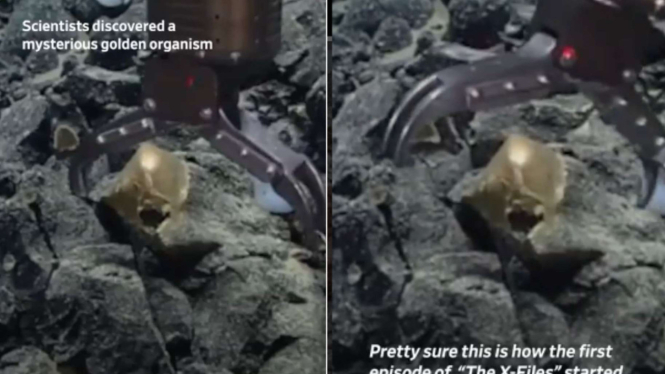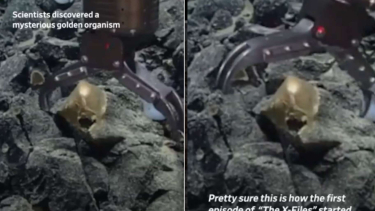Scientists Find Strange Golden Egg on Ocean Floor
- Tangkapan Layar
Alaska – A mysterious golden egg-shaped organism was discovered by National Oceanic and Atmospheric Administration (NOAA) Ocean Exploration scientists or researchers while conducting long-distance dives in the deep sea off the coast of Alaska, exactly on last week.
The strange dome-shaped object was found about 2 miles (3,300 meters) below the sea surface on an underwater mountain in the Gulf of Alaska. The object is about 4 inches (10 centimeters) wide.
NOAA Ocean Exploration’s Seascape Alaska mission was stationed 250 miles off the southern Alaskan coast using remote-operated vehicles to explore an extinct underwater volcano when it came across the golden egg casing.
Penemuan Telur Emas di Dasar Laut
- Tangkapan Layar
The discovery, which was being streamed online, definitely gave scientists and viewers pause.
"Scientists are confused by the discovery of an unidentified golden egg-like organism while operating a remote deep-sea submersible off the coast of Alaska. Researchers are conducting tests to find out what the organism is." wrote the uploader's caption on the intagram account @.wsj.
The research team is now trying to figure out if the sphere is related to a known species, a new species, or represents a previously unknown life stage.
The NOAA Seascape Alaska expedition that discovered the orb was a mission to learn more about the relatively unknown deep waters off the coast of Alaska.
The team plans to map the region and learn more about the creatures - both known and unknown - that inhabit these waters.
Researchers are conducting DNA tests and analysis to pinpoint the shiny object - which Noaa says feels like "skin tissue".
A remotely operated arm was used to "tickle" the egg, which was found to have a "soft skin texture". The egg was then gently "sucked" into a tube for testing in the lab.
DNA testing should be able to determine which family of marine life the sphere belongs to, although it is unlikely to be able to identify the exact species as only a small percentage of marine life has been found before.


























